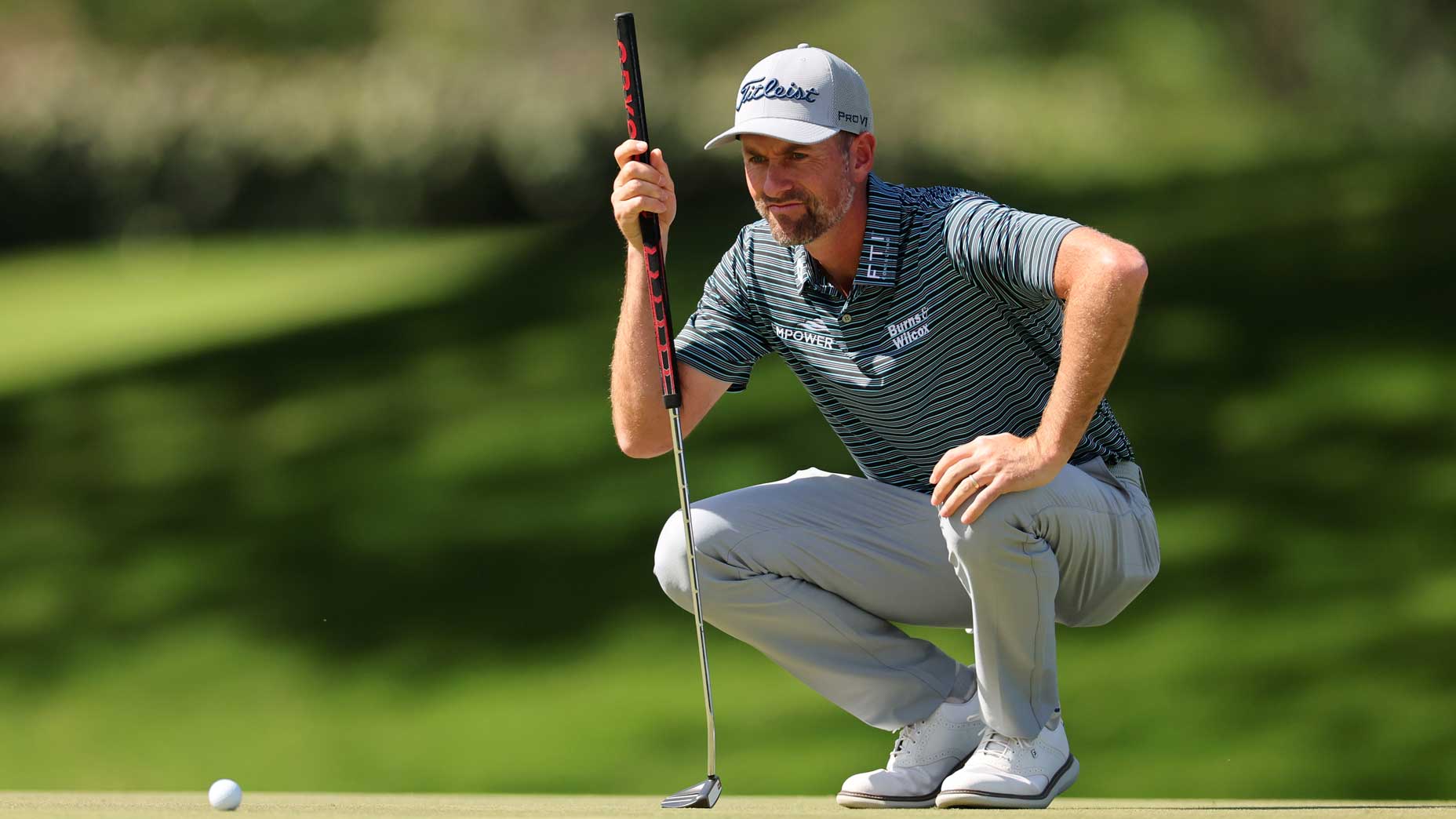
Nick Dunlap is playing by himself this week while Andrew Novak isn’t in the field.
Brennan Asplen/Getty Images
Nick Dunlap is flying solo in more ways than one this week.
The former amateur star, who turned pro and left his Alabama teammates behind in January after becoming the first amateur to win on the PGA Tour in more than 30 years, is playing by himself this weekend.
OK, so maybe Dunlap isn’t completely on his own now that he’s left ‘Bama, but the point stands, he’ll be going off at 7:45 a.m. Thursday and 10:40 a.m. Friday for his first and second rounds of the Arnold Palmer Invitational all by his lonesome.
With just 69 players in the field this week, Dunlap, who has finished 80th-MC-T53 in his three starts since winning the American Express, drew the short end of the draw and will be the first player off in the early/late wave with no one accompanying him.
This isn’t as rare as you might think on Tour. There were odd numbers of players at the Sentry in 2022 and ’23 when the event included just winners and Tour Championship qualifiers. In 2023, Adam Svensson played as a single for the first two rounds. The year before, Cameron Champ did the same.
After all the controversy surrounding Signature Event fields, at least a couple of pros and other members of the golf world are wondering if the Tour should do something to prevent the onesome pairing.
Andrew Novak, who finished sixth in the Aon Swing 5 between the Mexico Open and Cognizant Classic, one short of getting into the field this week, even offered to play as Dunlap’s marker.
“I’ll play as marker this week, but if I top 10 again yall gotta pay me. Deal?” Novak tweeted after the pairings were released.
Entry into the Signature Events — the Arnold Palmer Invitational is the fourth of the year — has been a hot topic. The fields are limited to 80 players but the only event required to have a field of 80 is the AT&T Pebble Beach Pro-Am because it needs to have a pro partner for every amateur.
The Sentry (which has spots only for 2023 tournament winners and the FedEx Cup top 50) had 59 players, and the Genesis Invitational had 70 players.
The new eligibility categories for these eight events (aside for the Sentry) are last year’s Top 50 in the FedEx Cup standings, the new Aon Next 10 and Aon Swing 5, tournament winners from the current season, sponsor exemptions and Top 30 OWGR players, in that order.
Because of the priority difference, players who have won tournaments this season, but are not in last year’s Top 50 — like Matthieu Pavon, Jake Knapp and Austin Eckroat — are still counted in the Aon Next 10, the top 10 players in the current year FedEx Cup standings not otherwise exempt.
A similar issue occurred for Pebble and the Genesis when the Aon Next 10 was drawn from the FedEx Cup Fall rankings and Pavon and Greyson Murray were counted in the Aon Swing 5 for those events.
If tournament winners were ranked above the Next 10 and Swing 5 categories, then more players would gain entry into the field. But perhaps the rationale for the PGA Tour is that as the season goes on, there will be more winners, and not all of them will be in the Next 10 and Swing 5 categories, meaning there will be fewer players who qualify as both a winner and as one of the other exemptions. By the last Signature Event at the Travelers, there will likely be enough winners to fill the full 80-man field.
This is the first year of the Signature Event model, so the PGA Tour is likely to make some tweaks after this year, but it still leaves the Arnold Palmer with just 69 players.
Of course, 69 is divisible by three, meaning the Tour could use 23 threesomes this week instead of the 34 twosomes and Dunlap’s onesome if they wanted to avoid the issue altogether for this week. A PGA Tour spokesperson told GOLF, “Every effort is going to be made in Signature Events to play in twosomes off of one tee now that we are through with the West Coast.”










